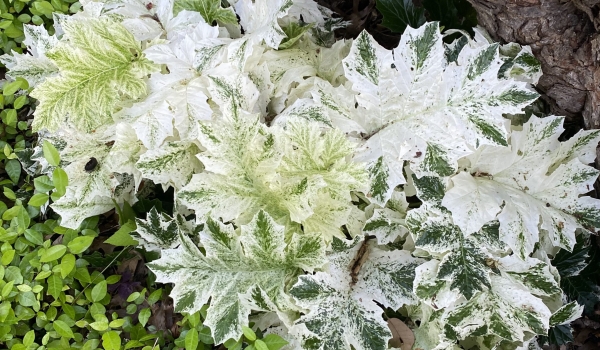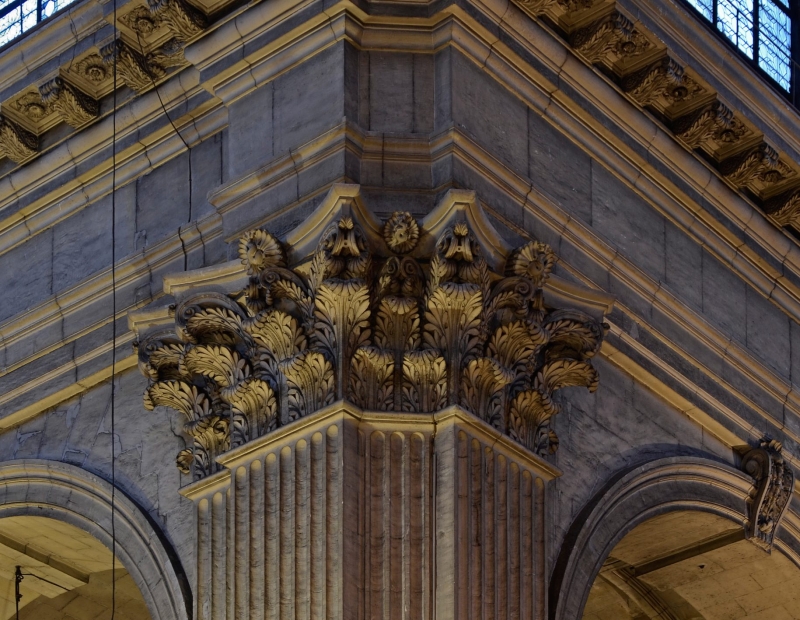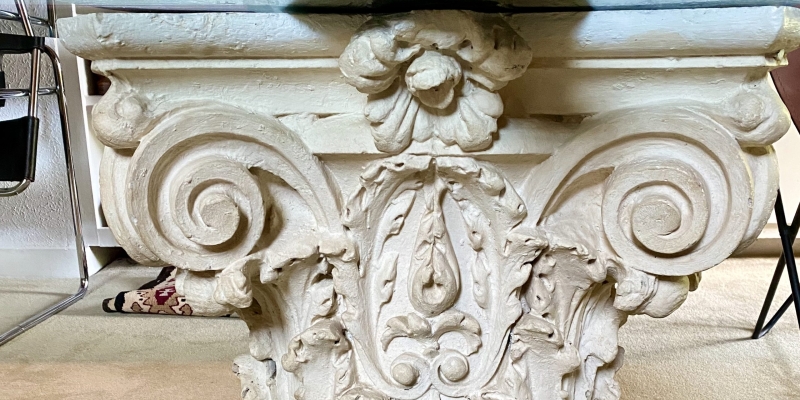Botanical Motifs in Architecture: The Acanthus
Above: Temple of Vesta, an ancient edifice in Rome tended by Vestal Virgins, features acanthus on the Corinthian column capitals
In the novel, “The Overstory” by Richard Powers, the author states “You and the tree in your backyard come from a common ancestor. A billion and a half years ago, the two of you parted ways. But even now, after an immense journey in separate directions, that tree and you still share a quarter of your genes.” It’s no wonder the classicists were enchanted by botanicals and employed the motifs in their design. This is the first in a series about architectural motifs.
Acanthus Leaves and Flowers
If you’ve ever looked up at a classical building and found a pattern of stylized leaves, you might be looking at the acanthus, a motif used in architecture since ancient times and symbolic of immortality. The acanthus is an impressive perennial, that grows in the Eastern Mediterranean and returns every spring with no cultivation.
There are several varieties of acanthus, some with thick, spiny serrated leaves, or jagged edges, like a large dandelion or thistle. It is native to the Mediterranean, and can be grown in a wide variety of harsh climates, like on windblown rocky ledges and islands with very salty air.
Acanthus leaves appeared in Greek architecture around the 5th century BC, and one of the most notable examples is on the Temple of Apollo, circa 450 to 420 BC. The leaves appear as elaborate details on column capitals, or friezes on a style of Greek architecture known as the Corinthian Order. Its design features several rows of acanthus leaves that point upward, some with edges tightly curled.
Later, the Romans adopted acanthus leaves in the design for an even more elaborate style of capital called Composite Corinthian, where the leaves were mixed with larger ram’s horn curls and other elements. The embellishment of the acanthus appeared on classical architecture into the early 20th century.
The appearance of acanthus leaves and flowers in architecture varies by culture and time period. They’ve been stylized, with simplified lines and graceful curves, each culture adapting it to its taste. Sometimes, leaf edges curve in tight curls, while others protrude forward. Good design remains beautiful forever. Chambers Architects enjoys all styles and genre of architecture whether it’s classical, Beaux Arts, traditional Early American, Mid-Century Modern, or minimalist, when it’s done well.











